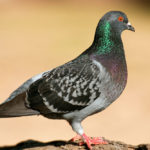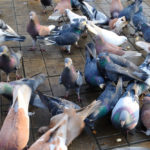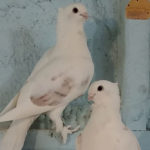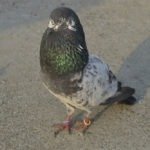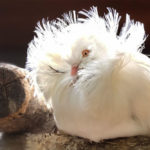Pigeons are one of the most common birds you’ll find in urban settings, coastal areas, and the backyard of your own home.
As wild and feral pigeons are considered an invasive species, or a pest that spreads harmful diseases, little is known about this incredibly important species of bird.
These misconceptions are often carried over to domestic pigeons, too.
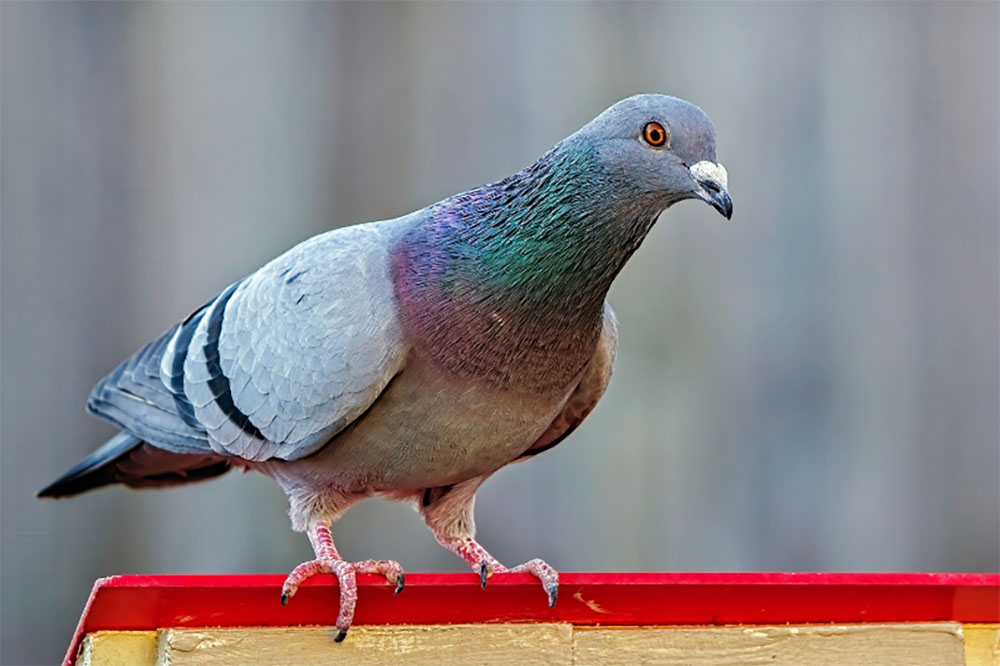
There are many differences between domestic and feral pigeons.
No, these birds aren’t being trained to cause havoc and poop everywhere in the cities.
Hobbyists, trainers, and bird-lovers alike are huge fans of owning domestic pigeons for a variety of reasons – from their trainability to their comforting noises.
Here is the ultimate guide to domestic pigeons!
What Is A Domestic Pigeon?
While domestic pigeons look exactly like feral pigeons, domestic pigeons are actually a subspecies that derives from the rock dove (or rock pigeon).
Rock doves are the most domesticated bird in the world, with domestication starting some 10,000 years ago.
To answer a common question – no, domestic pigeons aren’t feral pigeons taken off the street to be domesticated.
Domestic pigeons are a pigeon subspecies that has been domesticated for centuries!
Types Of Domestic Pigeons
There are three types of domestic pigeons – fancy breed, flier, and utility pigeon. Each of these types comes with their own purpose.
Technically, you could argue that there are four types of domestic pigeons, with the fourth being for hobbyists and bird-lovers who simply enjoy keeping domestic pigeons as pets.
Fancy breed pigeons are kept by hobbyists who maintain and breed their pigeons for shows.
These birds are often characterized by their unique appearance, such as the fantail pigeon that exhibits an impressive display of feathers on their tail.
Flier pigeons are typically used as homing and carrier pigeons.
When people think of domestic pigeons, they generally refer to homing pigeons due to their historic relevance during World War 2, where the birds played a key role in sending messages between the front lines.
Utility pigeons are kept by conservationists who strive to keep the pigeon species thriving. While most pigeon subspecies aren’t under threat, conservation statuses can change within generations.
Domestic Pigeon Appearance
The majority of domestic pigeons look exactly like wild and feral pigeons. These birds are bluish-gray all over, with a hint of green and purple on their necks.
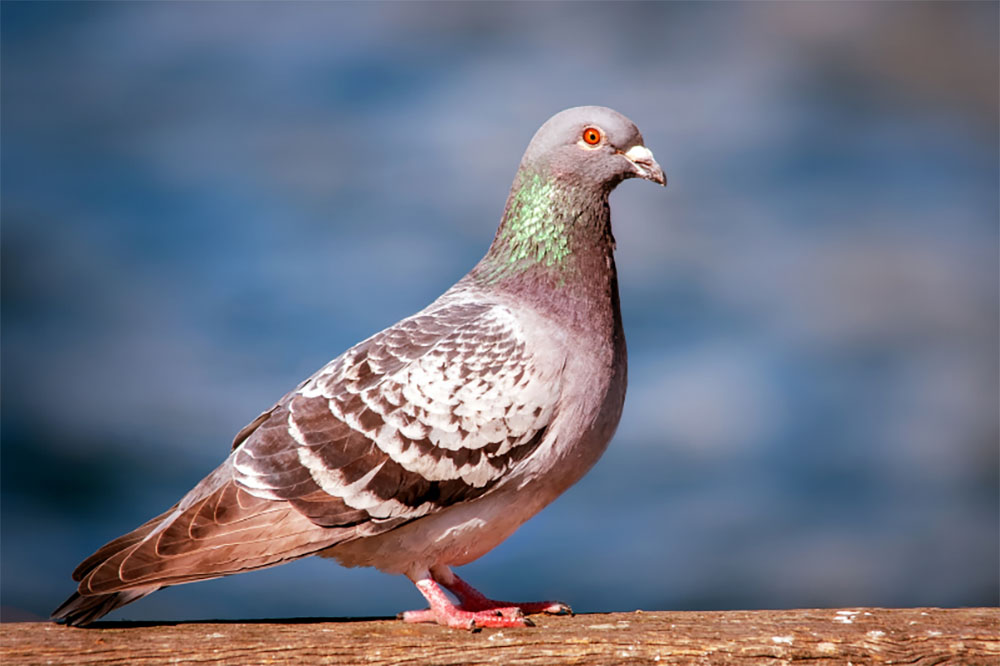
On the edge of their wings and tails feature black bands, and their beaks are equally black with a white line above the beak.
Their feet and legs are pink, and their eye color varies in shades of red and magenta.
There are some appearance variations of domestic pigeons depending on their subspecies. Some morphs include tan, white, black, and combination pigeons, for example.
Juvenile domestic pigeons look very similar to adult pigeons, especially considering they mature so quickly.
The only key differences are that juvenile pigeons are smaller, often possess fewer feathers, and have brown eyes that eventually turn red.
Domestic Pigeon Sounds
Domestic pigeons make the exact same noises as feral and wild pigeons. While some may disagree, a lot of people are comforted by the soft cooing sound that pigeons make.
It’s not harsh or loud – instead, it can be relaxing for bird-lovers.
When in flight, the wings of a pigeon make a slight clapping sound as their tips meet above them.
What Do Domestic Pigeons Eat?
The main reason why feral pigeons have such a short life expectancy (generally around 3-5 years) is because they don’t have access to a balanced, healthy diet in urban settings.
Domestic pigeons, however, can be given a brilliant diet that basically doubles the life expectancy of a feral pigeon.
Seeds and grains are the most important and main components of a domestic pigeon’s diet. Mixed seed bags are easy to find in pet stores, and some pigeon owners like to make their own mixes.
The range of seeds and grains provides an excellent source of protein, fatty acids, vitamins, and minerals.
The best source of protein for domestic pigeons are insects such as worms and snails, which would be their main food source in the wild.
Fruits and vegetables are also a tasty and healthy treat for domestic pigeons. As for water, domestic pigeons require access to fresh water at all times.
Feral pigeons, however, are exposed to polluted and dirty water from city ponds and fountains, as well as chunks of bread thrown by people.
Bread is simply a filler with no nutritional value, which can increase the chances of weight gain.
Domestic Pigeon Personality And Behavior
Contrary to popular belief, domestic pigeons are intelligent and sociable birds who generally like (or at least tolerate) the company of humans.
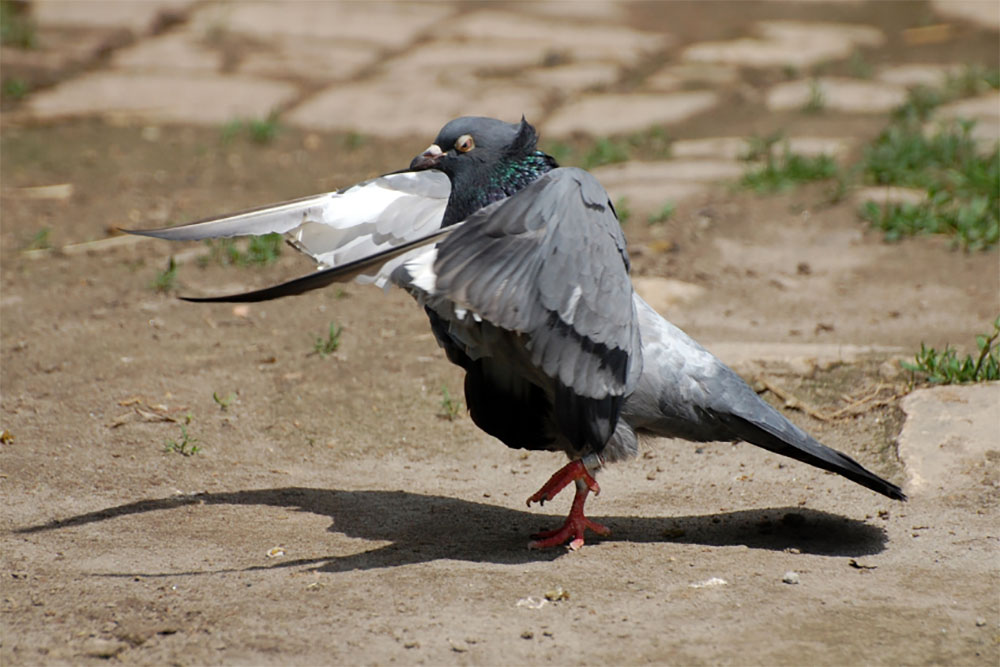
As these pigeons have been domesticated for centuries, they’ve grown to genuinely enjoy human companionship.
All pigeon subspecies are sociable birds that spend most of their time in a flock with between 50-100 pigeons – sometimes even more!
So, if you’re thinking of getting a domestic pigeon, you might want to consider getting more than one to provide some companionship.
It’s important for your pigeon to socialize and coo with their other pigeon friends to best replicate their natural lifestyles.
If you want to get the most out of your domestic pigeon, these birds are very easy to spend time with and get to know.
They generally enjoy affection and attention, which is why so many pigeon owners have created great bonds with their birds.
What Do Domestic Pigeons Do?
While feral pigeons spend their days pecking the ground in urban areas (from grassy parks to subway stations), domestic pigeons have a pretty relaxed lifestyle.
They don’t need to scavenge for food, because they are given the best diet possible already.
Instead, they can use their days to do other activities, such as bathing in the sunlight.
This is a popular daytime activity amongst domestic pigeons, so make sure you can provide an adequate space outside or by a window for your pigeon to soak up some rays.
When amongst other pigeons, these birds will interact with each other by preening and cooing. They’ll also spend a lot of their time sleeping.
As domestic pigeons have such a relaxed and non-aggressive personality, owners give them the freedom to do whatever they want during their day.
This also allows them to live as much of a natural life as possible.
Domestic Pigeon Breeding And Reproduction
Pigeons are monogamous birds that will mate with their partner for life. Because of this, it’s never wise to force a pair of pigeons to breed just for the sake of selling more domestic pigeons.
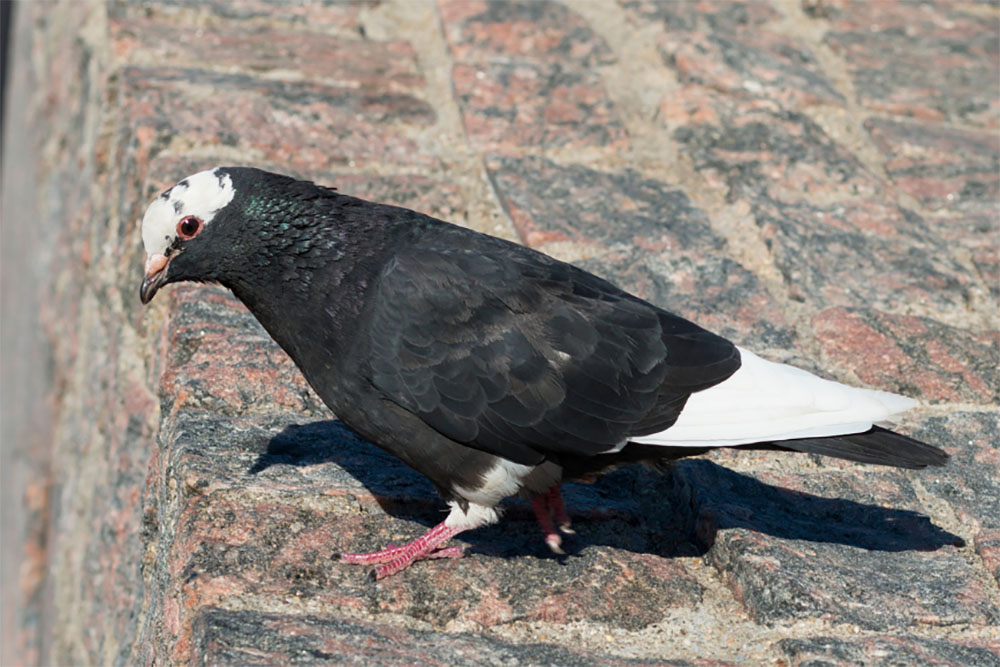
Instead, it’s better to allow them to figure things out naturally.
Domestic pigeons don’t necessarily have a courting ritual, but the male will generally strut around the female, bobbing his head, until the female makes her decision.
Once paired, the male and female will build a nest together.
In the wild, the male will get the twigs and foliage while the female builds the structure. Then, the female will lay a clutch of usually 2 eggs.
The incubation period is shared between the male and female, with the other either resting or gathering food.
The eggs hatch after 18-20 days, where the male and female continue to share feeding duties, before they are ready to leave the nest after a further 30 days.
In most cases, juveniles will stay in the nest after this time to get the best food possible – kind of like when your kid comes back from college every weekend.
Juveniles grow exceptionally quickly, which is why it’s so rare to see baby pigeons (known as squabs) in the wild.
However, they don’t reach sexual maturity until they are around 7-8 months old.
The females will usually wait until they are at least 1 years old until they produce a clutch, as this will enhance the chance of laying 2 eggs rather than 1.
Domestic Pigeon Predators
Fortunately, domestic pigeons aren’t exposed to predators in the same way as feral pigeons.
However, if you intend on allowing your pigeon to fly outside your home and backyard, their main predators are peregrine falcons and white-bellied sea eagles.
These birds of prey like to eat pigeons due to their smaller size.
Land predators include foxes, raccoons, weasels, and opossums.
If you like to let your pigeon wander around your backyard, it’s a good idea to secure your backyard with strong fences to prevent such predators from eating your bird.
Domestic Pigeon Lifespan
As domestic pigeons aren’t exposed to life-shortening factors such as pollution, lack of food, and predators (unlike feral pigeons), these birds can live between 10-15 years.
Some domestic pigeons have even lived up to 20 years with good care.
How To Keep Domestic Pigeons Safe
To maintain the health and quality of life for your pigeon, you’ve got to commit to safety precautions like providing a secure loft or coop.
This is to prevent predators from coming in and to stop your pigeons from escaping.
Take care of your pigeon as with any pet – regular vet trips and keeping a close eye on the bird when they are outside are essential.
Domestic Pigeon Care Tips
- If conflict arises between pigeons, place barriers between the fighting birds. Make sure to clean their droppings regularly to prevent further territorial fighting.
- Only buy domestic pigeons from local and reputable breeders, as these birds will be the healthiest. Alternatively, if you’re an experienced pigeon owner, look for domestic pigeons in rescue shelters!
- Be prepared to commit your time to socializing with domestic pigeons to get the most out of the bird. Otherwise, what’s the point in owning a pigeon?

